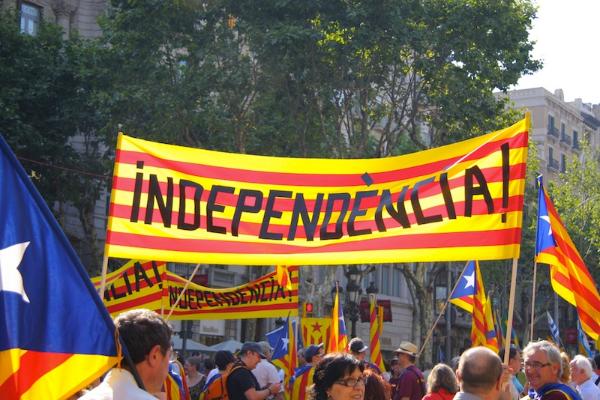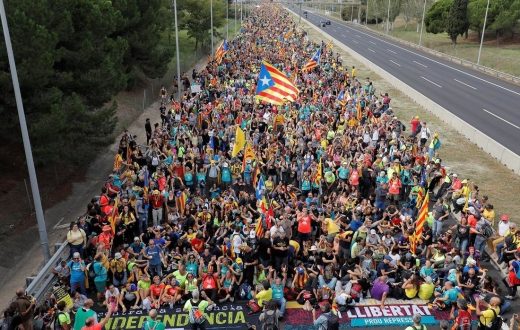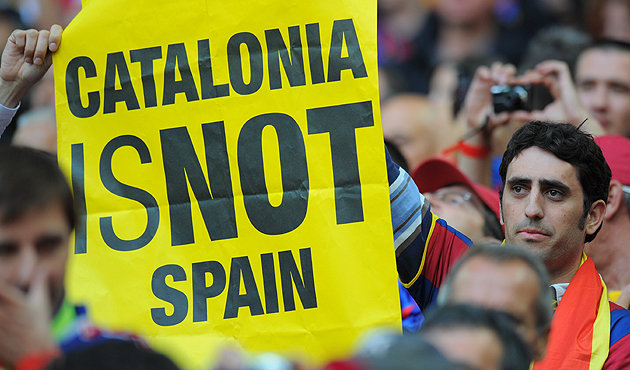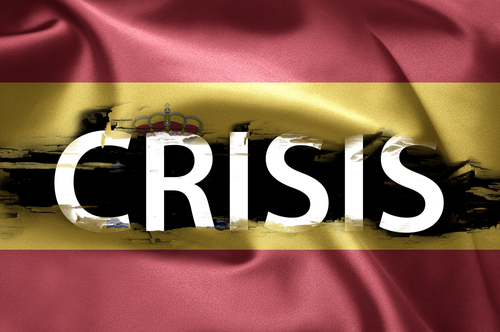This article is the first one of a set of three, trying to highlight the key facts, the causes, and the consequences of the separatist events that took place in Catalonia in the decade 2010.
In Spain, it has been called ‘El procès’. This word refers to the process which aimed at gaining Catalonia’s independence in 2017.
For a couple of days now, the judgment of the twelve Catalan separatist leaders who organized this ‘Procés’ has been reviving the tensions in Catalonia. The yellow ribbons have reappeared on the coats of many Catalans. On the top of that, the coming local elections scheduled for the 26th of May brings a shadow of uncertainty about the future of Catalonia.
A lot has been said about this separatism, but what are the keys events that led to the first of October (1-O), when dozens of cameras recorded the brutal confrontation between the Spanish State and the separatists?
1/ The Statute of Autonomy of Catalonia of 2006
When Franco died in 1975, the Prime Minister Adolfo Suárez started a peaceful transition towards a Spanish democracy. In 1978, Spain had its own Constitution, and one year later, the Statute of Sau guaranteed for Catalonia a large autonomy.
In June 2006, a new Statute was proposed by the Catalan government to the Catalan citizens, who accepted it by referendum, even if the turnout was low (around 50%). This new Statute aimed at clarifying the relationship between Spain and Catalonia, and also the way the Catalan government was financed.
The PP (Partido Popular) declared that several articles of this Statute were unconstitutional, amongst them the one declaring that Catalonia was a nation. They asked the Constitutional Court to judge it, but the judgment came only four years later. The Constitutional Court rewrote 14 articles, and this brought to a large part of the Catalan society the feeling that the essence of the Statute had been taken away.
A huge demonstration followed this event, gathering around one million protesters, under the Catalan slogan ‘Som una nació. Nosaltres decidim’ (We are a nation, we decide.)
This event, combined with the impact of the economic crisis in Spain and other factors that will be analyzed in a second article, led to a brutal raise of the pro-independence voting intentions from 24.5% to 47% between 2010 and 2012. (according to the CEO, Centro de Estudios de Opinió)
2/ The referendum of 2014
It is usually forgotten that the referendum of the first of October 2017 was not the first one taking place in Catalonia. In fact, between 2009 and 2011, 522 towns organized their own referendums about the independence.
In November 2014, after another huge demonstration that had taken place two months before, where protesters had formed in the streets of Barcelona a giant ‘V’ to call for a vote, a referendum finally occurred. The result was 81% in favor of the independence but with a turnout of just 42%, thus no significant.
3/ The referendum of the 1-O
Carles Puigdemont promised in 2016 that a referendum with the question ‘”Do you want Catalonia to become an independent state in the form of a republic?” would be held in 2017.
This referendum was suspended by the Constitutional Court, but it did happen, even if the Spanish police had been sent to the polling centers in order to seize the ballots. The Catalan government then declared that 90% of the votes were in favor of an independence. However, as it occurred in 2014, the turnout was really low, just 43% of the Catalan voters, not to mention that some people voted more than once.
4/ The declaration of independence and the triggering of the article 155
At the end of October 2017, Carles Puigdemont declared the independence of Catalonia. As a result, the article 155 was immediately triggered. The Catalan government was dismissed and Madrid took temporarily the control of Catalonia.
New elections were quickly organized, and even if the anti-independence party Ciudadanos got most of the votes (25%), the pro-independence parties stayed with a majority in the Parliament.
5/ And now?
A demonstration of 200 000 protesters was organized last month, as the judgment of the ex- separatist leaders started.
The current president of the Catalan government, Quim Torra, is right now struggling against the accusation of not having got rid of the yellow ribbons on the fronts of the public Catalan institutions, which should normally remain neutral.
From all of this, it appears that the apparent calmness that Catalonia experienced in 2018 is now compromised. The outcome of the judgment of the ‘Procès’ will certainly be decisive to know the future of Catalonia.








